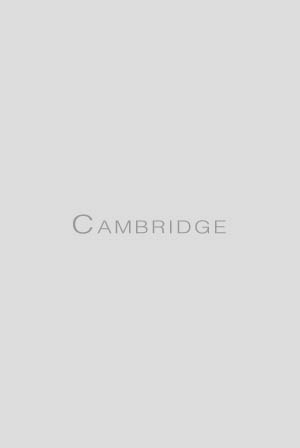Article contents
Extract
A short paper can give but a glimpse at the life of a professional musician who worked in London for over half a century. Baptised Domenico Carlo Maria, Dragonetti was born in the poor parish of St. Gervasio and St. Protasio (called St. Trovaso), Venice. As with most details of his early life, there are conflicting reports as to his date of birth. Vincent Novello gives 10 April 1763, but Caffi, the musical historian and friend of Dragonetti, gives 7 April. Other dates that are variously given include 1755 (a date which also appears on one of Dragonetti's bows, now in the author's possession), ‘1762 or 1764’, and 1771.
- Type
- Research Article
- Information
- Copyright
- Copyright © 1971 The Royal Musical Association and the Authors
References
1 British Museum, Add. MS 17838, f. 437.Google Scholar
2 Caffi, F., Storia della Musica Sacra, Venice, 1855, ii. 73–91.Google Scholar
3 Grove's Dictionary, 1st edn., London, 1879–89.Google Scholar
4 The Times, 18 April 1846.Google Scholar
5 F. J, Fétis, Biographie universelle des musiciens, 1st edn., Brussels, 1835–44.Google Scholar
6 'Sketches of the Lives of Celebrated Musicians. No. IV, The Musical Magazine, i (1835), 55.Google Scholar
7 ‘Orchestral Sketches’, The Musical World, i (1836), xi. Novello's authorship is revealed in The Illustrated London News of 25 April 1846, where the article, originally unsigned, was used for Dragonetti's obituary.Google Scholar
8 Ibid.Google Scholar
9 Grove's Dictionary.Google Scholar
10 The Musical Magazine, loc. cit.Google Scholar
11 British Museum, Th. Cts. 42.Google Scholar
12 Waters, E., ‘A Statement of Matters relative to the King's Theatre’, The Quarterly Musical Magazine and Review, i (1818), 250.Google Scholar
13 British Museum, Add. MS 17838, f. 413.Google Scholar
14 Dictionary of National Biography.Google Scholar
15 Grove's Dictionary.Google Scholar
16 British Museum, Add. MS 17838.Google Scholar
17 Notably British Museum, Add. MS 17828.Google Scholar
18 British Museum, Add. MS 17838, ff. 21–22. Mrs. Lucy Anderson (1789–1878) was an eminent pianist who appeared frequently at Philharmonic Society concerts, and piano teacher to Queen Victoria and the royal family. Her husband George was a professional violinist.Google Scholar
19 Oh! yes, our love, and all its hours, / the POETRY by Joseph Macgregor / the Music COMPOSED and arranged with / Symphonies & Accompaniments for the Piano Forte by / D. DRAGONETTI / EDINBURGH [c. 1835] Printed & Sold by Alexander Robertson at / the Music Salon, No. 39 Princes Street. Price 1/6 (British Museum, Add. MS 17829, f. 69).Google Scholar
20 Corri, N., Edinburgh [c. 1820].Google Scholar
21 Philip H. Albright, Original Solo Concertos for the Double Bass, Rochester, U.S.A., 1969, p. 35.Google Scholar
22 British Museum, Add. MS 17726, f. 1.Google Scholar
23 ‘Mr. Fetis's Fourth Letter’, The Harmonicon, vii (1829), 219.Google Scholar
24 Geoffrey Shortbow, or the Country Amateur in London; giving an account of the Musical Movements in the Metropolis during the Season of 1839 [reproduced from The Cheltenham Looker On], p. 3.Google Scholar
25 British Museum, Add. MS 17838, ff. 431–2.Google Scholar
26 Sir David Salomons (1797–1873), an amateur cellist, later became a founder member of the London and Westminster Bank, and in 1855 was elected Lord Mayor of London. The autograph score of the Duetto remained unpublished and in the possession of the Salomons family until early in 1968. The original parts are in Dragonetti's hand and are in the key of D, from which it can be deduced that he did not use a solo scordatura on this occasion.Google Scholar
27 British Museum, Add. MS 17824, f. 1. From 1836 he had also been living at No. 9 Panton Street.Google Scholar
28 British Museum, Add. MS 17838, ff. 77–78.Google Scholar
29 ‘Bacchus and Apollo’, Record of the Musical Union, iii (1845), 19.Google Scholar
- 2
- Cited by


